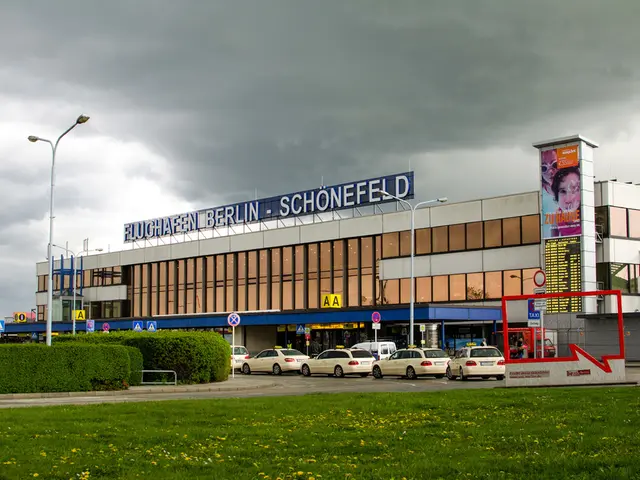Shifting from gas usage... a potential crisis of stranded assets looming?
In the midst of Europe's accelerated energy transition, the continent is grappling with the implications for its existing gas infrastructure. A recent analysis suggests that transport networks and regasification assets, often operated by the same company in a given territory, are better positioned to weather this transition compared to distribution networks.
The UK, Germany, the Netherlands, and France are leading the charge in designing ambitious joint hydrogen and Carbon Capture, Utilization, and Storage (CCUS) strategies. Italy and Spain, however, seem less advanced in their support for CCUS uptake. Hydrogen uptake is expected to materialize first in port environments, forming energy and industry hubs, in combination with CCUS for multiple uses.
The European Union (EU) is actively advancing hydrogen and CCUS projects, with Germany specifically aiming to accelerate its hydrogen economy to become a key market by 2030. The Rhein-Kreis Neuss region in Germany is undertaking detailed hydrogen roadmap implementation to establish a leading hydrogen ecosystem. The EU also integrates CCUS strategies alongside hydrogen to optimize energy mix efficiency, allowing technologies like "blue" hydrogen and CO₂ capture in industry to support climate targets.
Retrofitted gas transport networks could play a significant role in developing a pan-European hydrogen backbone by 2040, accounting for 60% of hydrogen infrastructure by that year. However, it's important to note that retrofit gas pipelines would only account for a fraction (17%) of the EU's existing transport pipelines.
The behavior of demand beyond 2030 remains uncertain due to the unclear transition pathways for residual demand niches like grid flexibility and high-temperature process heat. Gas demand is projected to peak in the late 2020s, marking a shift away from natural gas as a bridge fuel. In the power sector, non-thermal baseload and surging solar output are reducing gas-to-power demand.
The stranding risk for gas infrastructure in the Euro zone is present and could be considerable in the future. The International Energy Agency's (IEA) latest Net Zero Roadmap models a 75% reduction in gas consumption by 2050. In Europe, transmission and regasification assets are best placed to enjoy the largest breadth of transition options to tackle asset stranding.
The energy crisis in Europe has led to a structural reduction in natural gas demand capacity, putting the EU on an accelerated energy transition pathway. Approximately 20-30% of the demand loss in the industrial sector during the crisis is considered structural and unlikely to recover. Across six major gas-consuming economies in Europe, gas consumption has decreased by 5.4bcm year-on-year over H1-24, and by 24bcm relative to 2021.
Spain aims to develop a renewable hydrogen production and export hub to Europe and ultimately a transport corridor potentially linking Morocco to Germany. Uncertainty in the rate of gas use decline presents challenges in gauging the stranding risk for associated infrastructure.
Emerging low-carbon gases, such as low carbon hydrogen or biogas, could potentially offer a net-zero aligned second life to some gas infrastructure assets. A significant uptake of CCUS could also reduce the extent of gas demand contraction, while offering some gas infrastructure assets a transition option.
Ivan Pavlovic, an industry expert, highlights the present and potential future considerable stranding risk for gas infrastructure in the Euro zone. The transition to a hydrogen-based economy, coupled with the adoption of CCUS technologies, presents both challenges and opportunities for Europe's gas infrastructure.
Read also:
- Peptide YY (PYY): Exploring its Role in Appetite Suppression, Intestinal Health, and Cognitive Links
- Toddler Health: Rotavirus Signs, Origins, and Potential Complications
- Digestive issues and heart discomfort: Root causes and associated health conditions
- House Infernos: Deadly Hazards Surpassing the Flames








